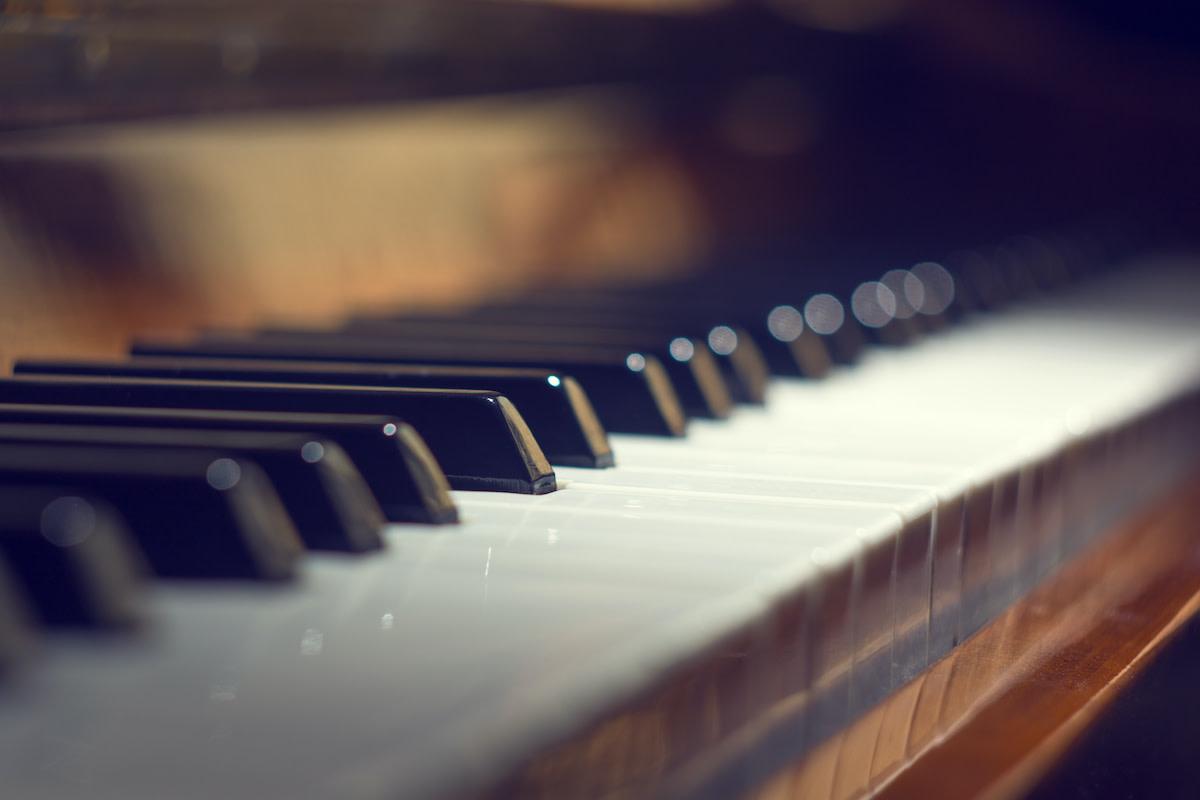Guide to Pianos: 7 Types of Pianos Explained
Written by MasterClass
Last updated: Jun 7, 2021 • 3 min read
Italian instrument maker Bartolomeo Cristofori invented the piano in approximately 1700. Since then, many types of pianos have taken their place in concert halls, rehearsal studios, and private homes.
Learn From the Best
What Is a Piano?
A piano is a chordophone—a type of string instrument. It produces sound via vibrating piano strings that run across a soundboard inside the instrument. When a player presses a piano key, they trigger a felted hammer to strike a string. This hammer strike causes the string to vibrate, producing the modern piano sound we recognize today. Due to its unusual anatomy, the piano can also be classified as a percussion instrument, but under the Hornbostel-Sachs system of classification, pianos are grouped with chordophones.
The piano draws on characteristics of preceding keyboard instruments including the harpsichord, the clavichord, and the organ. It has tone quality and dynamic range that set it apart from all prior keyboard instruments, and it remains the musical instrument of choice for classical concertos that highlight keyboard playing.
A Brief History of the Piano
- Baroque era: Italian instrument maker Bartolomeo Cristofori invented the piano around the height of the Baroque era in 1700. Cristofori sought to create an instrument that functioned much like a harpsichord or clavichord but with a richer sound quality and the option to play both loud and soft. Cristofori's piano action—a series of levers that connect piano keys to the hammers that strike piano strings—made this possible. Cristofori called his invention the pianoforte, combining the Italian words for soft (piano) and loud (forte).
- Classical era: The modern piano action owes a great deal to the eighteenth-century inventors John Broadwood and Robert Stodart (both Scottish) and Americus Backers (of the Netherlands). Their modernized pianos were sent to some of the most prominent musicians of the Classical period, including Ludwig van Beethoven and Franz Joseph Haydn.
- Romantic era: During the nineteenth-century Romantic era, piano manufacturing was centered in Paris. The French company Pleyel manufactured many of the most acclaimed pianos of the era, and their instruments were used by the likes of Frederic Chopin and Franz Liszt.
- Modern era: Later in the nineteenth century, German-American builder Henry E. Steinway founded the Steinway & Sons company in New York City, and the firm remains at the forefront of contemporary piano design, along with other notable manufacturers including Baldwin, Yamaha, Kawai, and Bösendorfer.
7 Types of Pianos
Today's pianists can choose between many different types of pianos, each with its unique form and function.
- 1. Baby grand piano: The baby grand piano is designed to produce a large sound in a small space. Most baby grands range in length from five to seven feet, which fits many living rooms. A particularly long baby grand piano is sometimes called a “parlor grand” or “medium grand.”
- 2. Concert grand piano: A concert grand is a full-size version of a baby grand, with longer strings, a larger soundboard, and a more resonant sound. Music fans may have encountered concert grand pianos as part of a symphony orchestra, particularly as part of a piano concerto with a featured soloist. Large recording studios may keep a concert grand on hand as an official studio piano.
- 3. Upright piano: An upright piano is a vertical piano. The pianist plays it the same way as a grand piano, but its resonant components—strings, soundboard, piano action dampers—run upright. This allows the piano to fit in smaller spaces like rehearsal studios at music schools. Many youth musicians take piano lessons on upright pianos but may play recitals on a baby grand or concert grand.
- 4. Spinet: A spinet piano is a smaller version of an upright piano. It has the same structure but tends to stand only three feet tall.
- 5. Console piano: A console piano bridges the gap between a spinet and a standard upright piano. Most range in size from 40 to 44 inches tall. They are more affordable than spinets and more compact than a traditional upright.
- 6. Player piano: A player piano is an automated piano. Traditionally, the player piano’s owner would program it by loading it with a piano roll—a punch-hole form of sheet music. Player pianos are rare today, and they can now be programmed digitally without the need for a physical piano roll.
- 7. Electric piano: Also known as a digital piano or synthesizer, this musical instrument emulates the timbre of an acoustic piano, but it produces sounds electronically without vibrating strings. This kind of piano can control MIDI instruments and create orchestral sounds via a digital computing language.
Want to Learn More About Music?
Become a better musician with the MasterClass Annual Membership. Gain access to exclusive video lessons taught by musical masters, including Sheila E., Timbaland, Itzhak Perlman, Herbie Hancock, Tom Morello, and more.
